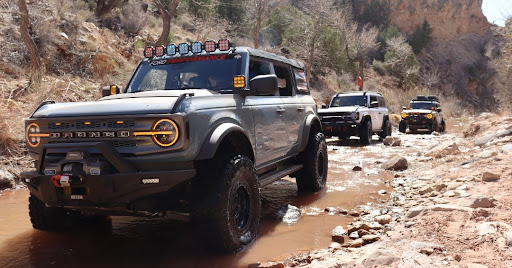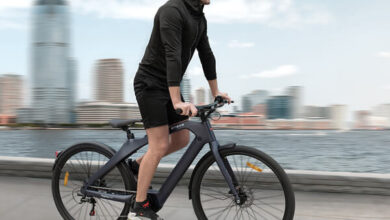Off-Road Skid Plates for Trucks and SUVs: Your Rig’s Best Friend

If you’ve ever dragged your truck’s belly over a gnarly rock or heard that sickening scrape of metal on stone, you know precisely why off-road skid plates for trucks and SUVs aren’t just accessories, they’re necessities.
I’ve learned this lesson the hard way, and trust me, it’s way cheaper to install protection than to explain to your mechanic how you managed to puncture your oil pan 50 miles from nowhere.
Why Your Truck Needs Off-Road Skid Plates
Here’s the thing about off-road skid plates for trucks and SUVs: they’re armor for all the expensive stuff hanging underneath your rig.
Your oil pan, transmission, transfer case, and fuel tank are all sitting there like sitting ducks, just waiting for that one sharp rock to ruin your whole weekend. And probably your bank account, too.
I’ve seen guys limp back to camp with transmission fluid dripping everywhere because they thought their factory “protection” was enough.
The reality is that simple stuff breaks when you go off-road. That’s just part of the game. Some breaks cost $50 to repair, while others cost $5,000. Guess which category most undercarriage damage falls into?
Different Types of Off-Road Skid Plates (And Why You Need Them All)
Engine and Transmission Skid Plates
Your engine skid plates are protecting the heart of your rig. That oil pan down there? It’s keeping your engine alive.
Punch a hole in it, and you’ve got maybe five minutes before your motor turns into an expensive paperweight.
Same goes for your transmission that housing gets cracked, and suddenly you’re calling for a tow truck instead of conquering trails.
Transfer Case Skid Plates
If you’re running 4WD (and why wouldn’t you be?), your transfer case is what splits power between your front and rear axles.
Damage this bad boy, and you’re stuck in 2WD just when you need all four wheels working. Transfer case skid plates are like insurance for your four-wheel-drive system.
Differential Skid Plates
Your diffs are what let your wheels turn at different speeds when you’re going around corners.
Break one of these, and you’ll know it immediately; your truck will handle like a shopping cart with a busted wheel.
Differential skid plates keep these gear sets running smoothly and efficiently.
What Are Off-Road Skid Plates Made Of?
Steel Skid Plates: The Tank Option
Steel is the old-school choice, and for good reason. These skid plates can take a severe beating and keep coming back for more.
I’ve seen steel plates that look like they’ve gone through a rock tumbler, still doing their job perfectly.
The downside? They’re heavy as hell, and your fuel economy will suffer.
Aluminum Skid Plates: The Sweet Spot
Aluminum is where most people end up, and it makes sense. You get solid protection without turning your truck into a tank.
Modern aluminum skid plates are tough enough to withstand severe abuse without compromising your gas mileage.
Additionally, they don’t rust, which is particularly beneficial if you live in an area prone to moisture.
Composite Skid Plates: The High-Tech Option
These are the fancy ones: ones that are lightweight, substantial, and expensive. If you’re building a race truck or weight is critical, composite off-road skid plates might be worth the premium. For most of us weekend warriors, though, they’re probably overkill.
Tacoma Skid Plate: Why Tacoma Owners Get It Right
Let me tell you about Tacoma skid plate setups. These Toyota owners know what they’re doing.
The Tacoma is already a solid off-road platform, but the factory protection is decorative. That’s where aftermarket Tacoma skid plate systems come in clutch.
A proper Tacoma skid plate setup covers everything that matters. We’re talking engine protection, transmission coverage, transfer case armor—the whole nine yards.
The best part about Tacoma skid plates is that they’re designed specifically for the truck, so they fit like they came from the factory.
I’ve watched Tacomas with proper skid plate protection drive over stuff that would strand other trucks.
The Tacoma skid plate market is huge because Tacoma owners use their trucks. These aren’t mall crawlers, they’re out there getting dirty, and they need protection that works.
That’s why you see so many options specifically designed for these rigs.
Installing Off-Road Skid Plates (Don’t Mess This Up)
DIY vs. Pro Installation
I’m all for wrenching on your own rig, but road skid plates for trucks and SUVs need to be installed right. Get the mounting points wrong, and your protection becomes a liability.
The Ground Clearance Reality
Off-road vehicles will require a bit of ground clearance. Usually, we’re talking about an inch or less, but it’s something to consider.
Here’s the thing, though, proper skid plate design slides over obstacles instead of hanging up on them.
Don’t Forget About Maintenance
Good skid plates don’t make maintenance impossible; they just require a little planning.
Look for systems with drain plugs and access panels. Your oil changes shouldn’t require removing half your armor every time.
Why Off-Road Skid Plates Are Worth It
Your Wallet Will Thank You
I know a guy who spent $3,800 fixing his oil pan, transmission mount, and exhaust system after one bad day on the rocks.
His skid plate budget was $800. Do the math, protection is always cheaper than repair.
Resale Value Protection
When you go to sell your truck, having quality skid plates tells potential buyers that you took care of your rig.
Nobody wants to buy a truck that’s been beaten to death underneath. Your protection investment pays dividends when it’s time to move on to the next vehicle.
Picking the Right Off-Road Skid Plates for Trucks and SUVs
Fit Matters More Than You Think
Don’t cheap out, skimp on skid plates. Vehicle-specific designs, such as proper Tacoma skid plate systems, fit better, protect more, and install easier.
Generic plates are usually a compromise in all the wrong places.
Quality Over Price
Cheap skid plates are expensive in the long run. They bend when they should deflect, break when they should protect, and fall off when you need them most.
Buy once, cry once, get quality protection that’ll last.
Taking Care of Your Off-Road Skid Plates
Keep Them Clean
Mud and debris tend to accumulate around off-road skid plates. Clean them off regularly, not just for looks, but because all that crud can hide damage and promote corrosion.
Plus, it’s easier to spot problems on clean plates.
Know When to Replace
Skid plates aren’t forever. Heavy impacts can create stress fractures that aren’t immediately obvious.
If a plate has taken a brutal hit, have it inspected. Better safe than sorry when it comes to protection.
Advanced Off-Road Skid Plate Features That Matter
Built-in Recovery Points
Some off-road skid plates for trucks and SUVs include recovery points or tow hooks.
These multi-purpose designs make sense; you’re already mounting heavy-duty hardware underneath, so you might as well make it worthwhile for more than just protection.
Maintenance Access
The best skid plate systems include quick-release sections or access panels for routine maintenance.
You shouldn’t need to remove your entire protection system just to change your oil.
Different Terrain, Different Off-Road Skid Plate Needs
- Rock Crawling: Maximum Protection
- Desert Running: Balance is Key
- Mud and Water: Corrosion Resistance
The Future of Off-Road Skid Plate Technology
Better Materials
New aluminum alloys and composite materials continue to improve the strength-to-weight ratio of off-road skid plates for trucks and SUVs.
We’re getting stronger protection with less weight penalty every year.
Integrated Everything
Future skid plates might include built-in lighting, camera mounts, or even impact sensors.
The idea is to make the protection system work more effectively and provide additional value beyond just armor.




